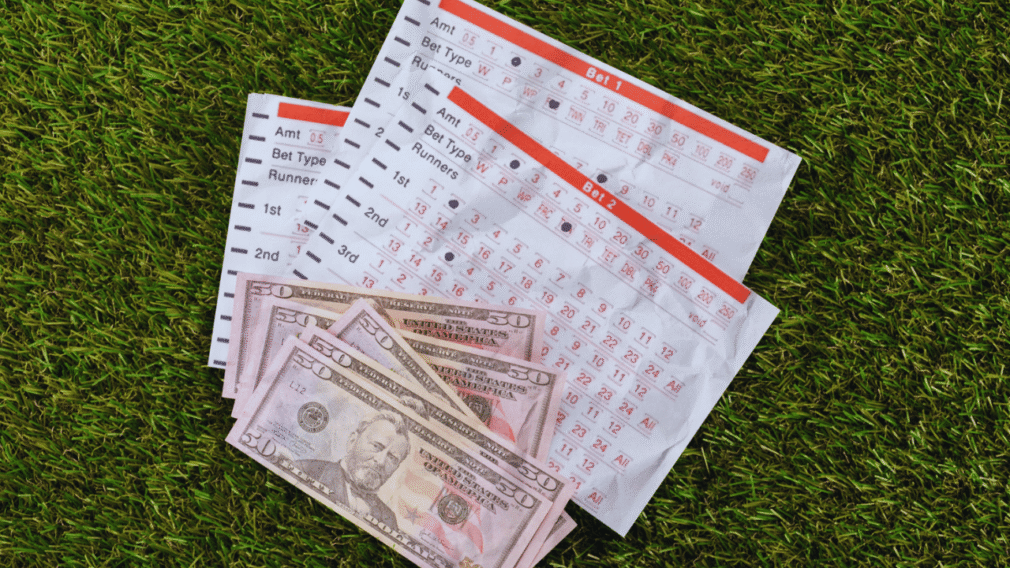Parlays vs. Single Bets: Understanding the Risk-Reward Trade-Off
Sports betting offers two primary ways to wager: the simplicity of a single bet or the multiplied thrill of a parlay. While single bets are favored by professionals for consistent returns, parlays are popular with casual bettors for their massive payout potential. Understanding the risk, reward, and the hidden math of each is essential for managing your bankroll.

Single Bets vs. Parlays: The Core Difference
The fundamental difference between single bets and parlays lies in the number of outcomes required to win and the inherent risk involved.
1. Single Bets (Straight Bets)
A single bet is a wager on one individual outcome. You win or lose based entirely on that one result. For example, betting $100 on the Chiefs is a single bet.
Pros:
- Low Risk: The risk is limited to that single event. A loss only costs you one wager.
- Simple Payouts: Payouts are straightforward, determined only by the odds of the chosen outcome.
- Professional Choice: Ideal for maximizing a long-term betting edge and minimizing variance.
Cons:
- Low Reward: Payouts are modest compared to parlays, limiting the “jackpot” potential.
2. Parlay Bets
A parlay is a single wager that combines two or more individual bets (called “legs”). To win the parlay, every single leg must be correct. If even one leg loses, the entire parlay is lost.
Pros:
- High Payout Potential: The odds of each leg are multiplied (compounded), turning a small stake into a potentially huge win.
- High Entertainment: It keeps a bettor engaged in multiple games or outcomes at once.
Cons:
- Extremely High Risk: The risk compounds with each added leg. The chance of winning drops multiplicatively.
- All-or-Nothing: There is no partial payout. Coming agonizingly close (“missing by one leg”) still results in a total loss.
Probability of Winning: Risk Multiplier
The biggest difference between the two bet types is the massive drop in the probability of success when you use a parlay.
The Compounding Risk
While a single bet (like a standard point spread) often has a chance of winning, a parlay multiplies the chance of losing.
Empirical data confirms this low probability: in legal US betting markets, only about of all parlay tickets are winners. Parlays multiply risk faster than they multiply the payout, which is the core reason they are so lucrative for sportsbooks.
Variance and Consistency
- Single Bets carry low variance. Results are steadier and more predictable over time. You win some, you lose some, and your long-term skill will be reflected in your winning percentage.
- Parlays carry high variance. Most of the time, you lose everything, but the occasional big payout creates massive swings in your bankroll.
Expected Value () and House Edge
For serious bettors, the most critical factor is the Expected Value (), which shows the long-term cost of a bet. Parlays are mathematically inferior to single bets because they compound the house edge.
Amplifying the Juice
A sportsbook’s built-in commission (the vig or juice) is what makes a bet for the player.
Single Bets: A standard single bet gives the house an edge (or “hold”) of about to . This is a manageable disadvantage for a skilled bettor.
Parlays: When you combine legs, the house’s edge compounds multiplicatively:
- A 2-leg parlay generally gives the house a hold of .
- A 5-leg parlay can give the house a hold ranging from to .
This massive margin is why sportsbooks rely on parlays. In states like Illinois, data shows the house profit (hold) on parlays () is almost four times higher than on straight bets ().
The Takeaway: The Expected Value of a parlay is significantly worse than the of betting those outcomes individually.To win long-term, a bettor would need to find a positive edge on every single leg, which is extremely difficult to do consistently.
The Psychology of Parlays: Why They Are So Popular
Despite the poor and high risk, parlays remain wildly popular, largely due to human psychological factors:
- Lottery Mentality: Parlays appeal to the desire to turn a minimal stake ( to ) into a life-changing jackpot. The potential payoff overrides the rational understanding of the long odds.
- Near-Miss Effect: Hitting four out of five legs often feels like “almost winning,” which is psychologically more motivating than a simple loss. This common phenomenon fuels the belief that success is just around the corner, enticing bettors to try again.
- Entertainment Value: Parlays create heightened excitement and stretch the entertainment value across multiple games, keeping bettors engaged for hours or days.
- Bragging Rights: Hitting a huge parlay is a social media event. This social proof (seeing others win big) encourages more people to chase the dream.
Expert Consensus and Strategy
The consensus among professional bettors and financial analysts is clear:
- Avoid Parlays for Profit: Legendary bettors like Billy Walters advise avoiding parlays because the compounded house edge makes them too difficult to beat consistently. They are “cash cows” for the bookmaker.
- Stick to Single Bets: If your goal is to generate long-term profit or sustain a bankroll, focus on single bets where your skill can overcome the lower vig.
- Use Parlays for Fun: Parlays should be treated as a recreational wager or a “lottery ticket”—an entertainment expense where the goal is the thrill, not income generation.
To summarize, balancing the thrill of the big score against the reality of the odds is paramount.
Recommended
